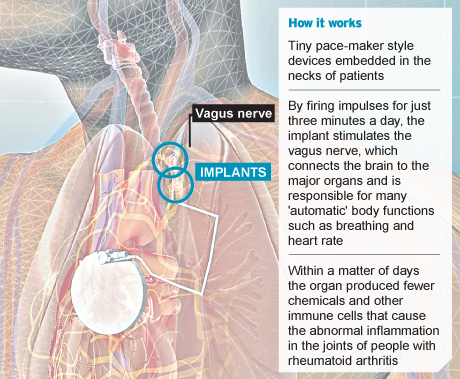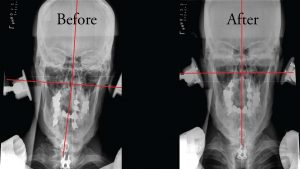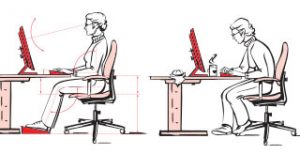- New Patient Line:
- (907) 336-0200

 It is the nature of modern healthcare that treatments are driven by research and research is driven by profit margins. Within the last several decades the vast majority of clinical research has become privatized–a situation that has put the management of clinical research into the hands of businesspeople, rather than clinicians.
It is the nature of modern healthcare that treatments are driven by research and research is driven by profit margins. Within the last several decades the vast majority of clinical research has become privatized–a situation that has put the management of clinical research into the hands of businesspeople, rather than clinicians.
The result is that instead of being the product of the best available evidence and scientific inquiry, the state of healthcare is, to a large extent, that of treatments and interventions that will result in the greatest possible long-term profit for those funding the research that drives those treatments.
To date this has resulted in an explosion of research aimed at altering human health and physiology through the use of countless numbers of prescription medications. ‘A pill for every ill’ might be an appropriate motto for our approach to healthcare in this day and age. And somehow we’ve just come to accept the reverse – ‘an ill for every pill’ – as an unavoidable consequence of what is marketed to us all as the ‘best available evidence’ for the care of our health.
But there is mounting evidence that the tomorrow’s healthcare may look very different from what we’ve come to expect as the standard for treating chronic disease and other conditions.
Make no mistake though, this potential turning point is not the result of any mysterious injection of virtue into the motivations of those who currently monopolize much of the healthcare system today–or even the discovery some new body of knowledge previously hidden from researchers. Rather, it seems to be the result of technological advances that are beginning to allow us the ability to ‘hack’ the most mysterious and powerful computer of all – our own central nervous systems.
Though the brain remains a frontier far too complex to unravel, a separate division of the nervous system known as the autonomic nervous system has long been understood to control, or at least modulate, the function of every major organ system and physiological process in the human body.
While the medical world has a cornucopia of drugs that attempt to simulate or inhibit the activity of the autonomic nervous system, it has given precious little thought to what actually constitutes normal function within this powerful regulator of health and disease.
But with advances in computer technology researchers are beginning to realize that they may actually be able to ‘read’ the signals being transmitted within the autonomic nervous system and identify faulty signaling that results in painful conditions and other diseases.
Tiny devices complete wit h their own onboard battery, microprocessor, and electrodes would be attached to the autonomic nervous system’s largest nerve – the vagus nerve – located just behind the point where the carotid pulse can be felt high in the neck. These devices would then read the signals traveling between the brain and body. Information transmitted wirelessly could then be analyzed and the same device would then have the ability to input synthetic electrical activity to the autonomic nervous system in an effort to diminish pain and enhance the inherent recuperative abilities of the body’s other physiologic systems. The result of which would be the correction and regulation of painful and debilitating conditions and diseases.
h their own onboard battery, microprocessor, and electrodes would be attached to the autonomic nervous system’s largest nerve – the vagus nerve – located just behind the point where the carotid pulse can be felt high in the neck. These devices would then read the signals traveling between the brain and body. Information transmitted wirelessly could then be analyzed and the same device would then have the ability to input synthetic electrical activity to the autonomic nervous system in an effort to diminish pain and enhance the inherent recuperative abilities of the body’s other physiologic systems. The result of which would be the correction and regulation of painful and debilitating conditions and diseases.
While still in its infancy and far from being refined to the point of being able to precisely target specific problem areas or conditions, this type of treatment is currently undergoing clinical trials and showing promising results.
In 2011 the first ever clinical trial using this type of technology to treat patients suffering with rheumatoid arthritis showed that the tiny implants patients received were able to significantly decrease the pain they experienced and stop and reverse the swelling of affected joints.
In January of 2015 the FDA approved a device that stimulates the vagus nerve in order to curb hunger in patients with specific obesity related problems.
Researchers are even looking at using this process to slow the progression of cancer in the human body.
So it should come as no surprise that pharmaceutical companies are turning a lustful eye toward this novel approach to medical treatment that has the potential to supplant prescription medications as the holy grail of medical intervention. Even now, likely decades away from the goal of producing a highly selective and intelligent device for delivering this type of treatment, pharmaceutical companies are investing millions of dollars in funding for research and clinical trials.
This type of advancement in the world of medicine is exciting.
And one can hope it has the potential of creating safer and more effective interventions for the treatment of chronic disease and other conditions. In reality though, it’s something that has been going on in a much smaller sector of the healthcare system for over 100 years.
In fact, the week before last I saw a patient who used to carry a special note from her ophthalmologist any time she drove a vehicle. An abnormal dilation of the pupil in her left eye had resulted in her being suspected of drug use several times after being pulled over by a police officer. While the doctor wasn’t able to correct the dilated pupil, he was able to supply a note explaining her condition, should she be questioned again in the future.
Upper cervical chiropractors have long credited the autonomic nervous system with the results seen from their work with the nervous system’s most intimate partner, the spine. So when this particular patient showed up in my office for a completely unrelated complaint, I wasn’t surprised when she returned the following week to report that her eye had suddenly gone back to normal.
I’ll be the first to admit that correcting the relationship between a person’s head and neck in order to reduce nerve irritation isn’t half as sexy as surgically clamping a super tiny computer to their vagus nerve–but it’s a damned sight more economical.
No, I can honestly say that I am not surprised when a specific correction to the upper cervical spine results in the ‘remission’ of a skeptical patient’s atrial fibrillation; or the return of normal respiratory ability to an asthmatic little boy, or even the cessation of a seizure disorder in Laotian woman. But the patient is almost always completely baffled that such a gentle, non-invasive procedure can result in such profound, health-altering changes.
Baffled, because we seem to have trained our society to regard dysfunction and disease as something that needs to be ‘treated’ by adding some special pill or potion to our systems, or by removing a ‘faulty’ organ or tissue–as though our bodies somehow lack the ability to heal or function properly without a great deal of external synthetic input.
When in fact a great deal of the disease and dysfunction we experience as human beings can be eliminated (and often avoided completely), not by adding a little bit of this and removing a little bit of that, but by simply paying attention to what’s already there and maintaining it intelligently.
An intelligent approach to abnormal pupil dilation doesn’t start with asking ‘what kind of medication will stimulate or inhibit this pupil to force contraction?’ It begins by asking ‘what could cause the normal control over pupillary balance to be lost?’
And as luck would have it, in this age of scientific understanding we have the answer. Two principle parts of the autonomic nervous system exist, cooperating in a ‘push-pull’ relationship to allow the body to shift between varying levels of ‘rest and digest’ and ‘fight or flight’. These are the sympathetic and parasympathetic portions of the autonomic nervous system.
While the parasympathetic nervous system creates constriction of the pupil, the sympathetic does just the opposite. And either a decrease in parasympathetic output or an increase in sympathetic output will result in dilation of the pupil.
For the last 100 years the practice of chiropractic has followed this elegant line of reasoning, paying particular attention to the inseparable relationship between the spinal vertebrae and the function of these nerves.
And by correcting the position of spinal vertebrae chiropractic has been in the business of restoring normal regulatory function to the autonomic nervous system, allowing the body to resume normal function without the cost and consequence of dubious prescription medications and other potentially harmful interventions.
So when I hear about emerging field of bioelectronics and the promise it holds for the drugless treatment of the many chronic diseases and conditions that are being so poorly attended to by the current state of modern healthcare, I’m genuinely interested in the potential it holds for future medical treatment. And I’m intrigued by the technology and research that will no doubt be developed in the process.
To a certain extent it’s gratifying to see the potential shift of modern medical care away from the drug-centered model toward a more elegant approach that attempts to work with the body’s inherent self-regulating and self-healing abilities. An approach that, to a certain extent, is more in line with the principles espoused by the chiropractic model of healthcare.
But forgive me if I find the wonder and astonishment of this ‘new revelation’ in medical care to be a bit duplicitous – perhaps even comical. Especially if, after decades of scorn and ridicule from the medical establishment, the principles of chiropractic are going to be repackaged and sold as a ‘new’ frontier in healthcare.
and ridicule from the medical establishment, the principles of chiropractic are going to be repackaged and sold as a ‘new’ frontier in healthcare.
In any case, it will be interesting to see how far science will be able to take this new concept of merging biology with electronics. The potential for integration between the human nervous system and today’s ultra-complex computer technology may sound like the stuff of science fiction novels. But a sober look back at the last 100 years of technological innovation adds a level of perspective that makes the unbelievable start to look like it might not be quite so out of reach.
Perhaps the day will come when we do finally unravel the complexities of the human body and can safely influence the vast network of relationships that govern it’s capacity for self-healing and self-regulation.
Until that day we can take comfort in knowing that despite our limited knowledge, the human body seems to do quite well when left to its own devices. Good food, a little exercise, and a healthy dose of common sense will get most a long ways toward living a healthy and prosperous life.

